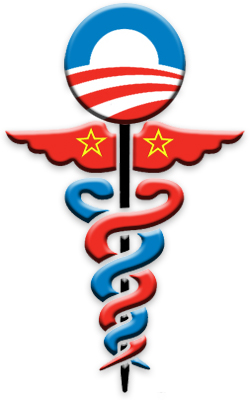Contributed by: filbert Friday, August 21 2009 @ 11:21 AM CST
 |
Now, to the articles. First up, What Libertarianism Is[*1] (notable in part for the use of the rather amusing word grundnorm[*2] ):
. . . libertarians maintain that the only way to violate rights is by initiating force — that is, by committing aggression. (Libertarianism also holds that, while the initiation of force against another person’s body is impermissible, force used in response to aggression — such as defensive, restitutive, or retaliatory/punitive force — is justified.)
Without property rights, there is always the possibility of conflict over contestable (scarce) resources. By assigning an owner to each resource, legal systems make possible conflict-free use of resources, by establishing visible boundaries that nonowners can avoid. Libertarianism does not endorse just any property assignment rule, however. It favors self-ownership over other-ownership (slavery).
Thus, the libertarian position on property rights is that, in order to permit conflict-free, productive use of scarce resources, property titles to particular resources are assigned to particular owners. As noted above, however, the title assignment must not be random, arbitrary, or particularistic; instead, it has to be assigned based on “the existence of an objective, intersubjectively ascertainable link between owner” and the resource claimed. As can be seen from the considerations presented above, the link is the physical transformation or embordering of the original homesteader, or a chain of title traceable by contract back to him.
Thus, if civilized man is he who seeks justification for the use of violence, the libertarian is he who is serious about this endeavor. He has a deep, principled, innate opposition to violence, and an equally deep commitment to peace and cooperation.
Next, The Republic becomes the Empire[*3] :
How much does the younger half of this generation reflect upon the fact that in its own time a complete revolution has taken place in the relations between government and people? It may be doubted that one college student in a thousand could even state it clearly. The first article of our inherited tradition, implicit in American thought from the beginning until a few years ago, was this: Government is the responsibility of a self-governing people. That doctrine has been swept away; only the elders remember it.
Now, in the name of democracy, it is accepted as a political fact that people are the responsibility of government. The forms of republican government survive; the character of the state has changed. Formerly the people supported government and set limits to it and minded their own lives.
Now they pay for unlimited government, whether they want it or not, and the government minds their lives — looking to how they are fed and clothed and housed; how they provide for their old age; how the national income, which is the product of their own labor, shall be divided among them; how they shall buy and sell; how long and how hard and under what conditions they shall work, and how equity shall be maintained between the buyers of food who dwell in the cities and the producers of food who live on the soil. For the last named purpose it resorts to a system of subsidies, penalties and compulsions, and assumes with medieval wisdom to fix the just price.
This is the Welfare State. It rose suddenly within the form. It is legal because the Supreme Court says it is. The Supreme Court once said no and then changed its mind and said yes, because meanwhile the President who was the architect of the Welfare State had appointed to the Supreme Court bench men who believed in it.
Emphasis in original.
Third, What Soviet medicine teaches us[*4] :
Being a People’s Deputy in the Moscow region from 1987 to 1989, I received many complaints about criminal negligence, bribes taken by medical apparatchiks, drunken ambulance crews, and food poisoning in hospitals and child-care facilities. I recall the case of a fourteen-year-old girl from my district who died of acute nephritis in a Moscow hospital. She died because a doctor decided that it was better to save “precious” X-ray film (imported by the Soviets for hard currency) instead of double-checking his diagnosis. These X-rays would have disproven his diagnosis of neuropathic pain.
Instead, the doctor treated the teenager with a heat compress, which killed her almost instantly. There was no legal remedy for the girl’s parents and grandparents. By definition, a single-payer system cannot allow any such remedy. The girl’s grandparents could not cope with this loss and they both died within six months. The doctor received no official reprimand.
Not surprisingly, government bureaucrats and Communist Party officials, as early as 1921 (three years after Lenin’s socialization of medicine), realized that the egalitarian system of healthcare was good only for their personal interest as providers, managers, and rationers — but not as private users of the system.
So, as in all countries with socialized medicine, a two-tier system was created: one for the “gray masses” and the other, with a completely different level of service, for the bureaucrats and their intellectual servants. In the USSR, it was often the case that while workers and peasants were dying in the state hospitals, the medicine and equipment that could save their lives was sitting unused in the nomenklatura system.
That should feed your deep-thought needs for the day.
